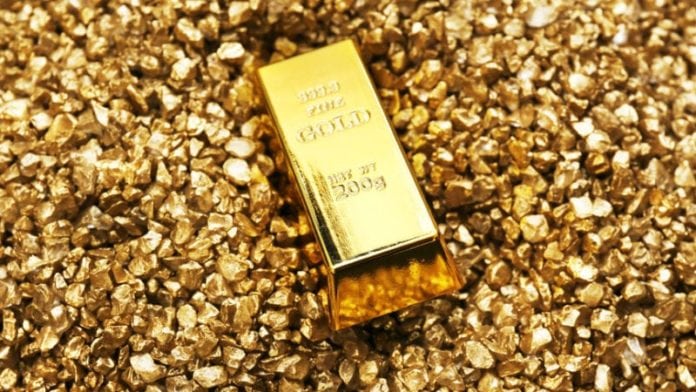
NO commodity in the world needs a health warning quite like gold.
Just ask Gold Fields CFO, Paul Schmidt, who earlier this year wrote forward sales contracts on a gold price assumption of $1,200 per ounce, and made similar local currency assumptions of some A$1,600/oz and roughly R555,000/kg for Australian and South African production respectively. The hedge book duly locked in a tidy $130m in pre-tax free cash flow.
The problem is that the rand gold price then sky-rocketed (it’s currently at R744,897/kg) . At the time of closing its interim results on June 30, Gold Fields has registered a mark-to-market non-cash loss on its hedge book of $120m.
“Gold Fields currently has about 50% of gold production hedged for 2019 and this morning states that 950,000 ounces of new hedging for 2020 is in place, about 45% of 2020 estimated production which limits Gold Fields’ upside for the current rally in gold prices,” said JP Morgan in a note following the gold firm’s interim results presentation.
“Therefore, we prefer close peer AngloGold which has minimal hedging in place and has full exposure in the current gold price,” it said.
It is, though, a question of horses for courses.
The view of Schmidt is that investors ought to take a dynamic view of the market. “We are not trying to guess it,” he said of the gold price. “Let’s see where we are at the end of the year.”
Gold companies, outside of producing dividends and share price appreciation, could be described as an exotic jungle flower that rarely blooms, but is worth the wait when it does. When the gold price booms, investors prepared to take the contrarian view most of the time on gold shares can make brick-like sums of money.
The question is: whither the gold price? Nick Holland, Gold Fields CEO, quite openly says he’s absolutely no clue where gold’s heading.
But analysts in the sector are paid exactly to do that.
According to Olé Hansen, head of commodity strategy at Saxo Bank, some of the key signs indicating a possible ‘consolidation’ in the behaviour of gold investors was the recent near record amount of exposure hedge funds expecting gold price appreciation have taken in gold futures. In addition, investment in gold through exchange traded funds (ETFs) were at 77.5 million oz at the time of writing, a six year high.
“These developments represent one of the few clouds on the current horizon as they increase the risk of sharp reversals such as the $55 top to bottom move in gold seen on August 11 when the market responded to news about a potential easing of the trade war,” said Hansen in a note a couple of weeks ago.
This brings about the reasons for gold’s surge. As is typical of gold price gains there has been the threat of geopolitical tensions as well as systemic financial pressures. More recently, there have been the ebbs and flows in the US, China trade war tensions.
“Nearly all of gold’s market signals are pointing to further upside, and the macroeconomic environment plus geopolitical tensions bring a risk of continued rally towards the highs of $1,900 to $2,000/oz, last seen in 2011,” said Morgan Stanley in a recent report.
This is where the health warning bit comes in regarding South African gold stocks.
Gold shares have already appreciated measurably, assisted by rand weakness which, in turn, has been motivated by a fear the country’s balance sheet is about to blow up. According to Morgan Stanley, near term US dollar strength and declines in China’s and India’s physical demand for gold could yet negatively alter the trajectory of the gold price. As with Saxo Bank’s Hansen, it also points to the net long positions in futures trade and the build up of ETF holdings.
Or not! Other analysts are bullish.
“We see gold testing the record $1,831/oz close of 31 August 2011 before long,” said René Hochreiter, an analyst for Noah Capital. “The breakdown in the Trump-US economy is likely in the next period as Trump’s trade war with China begins to adversely affect the US economy,” he added.
In terms of stock picks, Noah Capital likes Sibanye-Stillwater best, which is seeing the return of gold production following a six month strike by the Association of Mineworkers & Construction Union. It then prefers Harmony Gold, which is one of the more leveraged gold plays available on the JSE.











